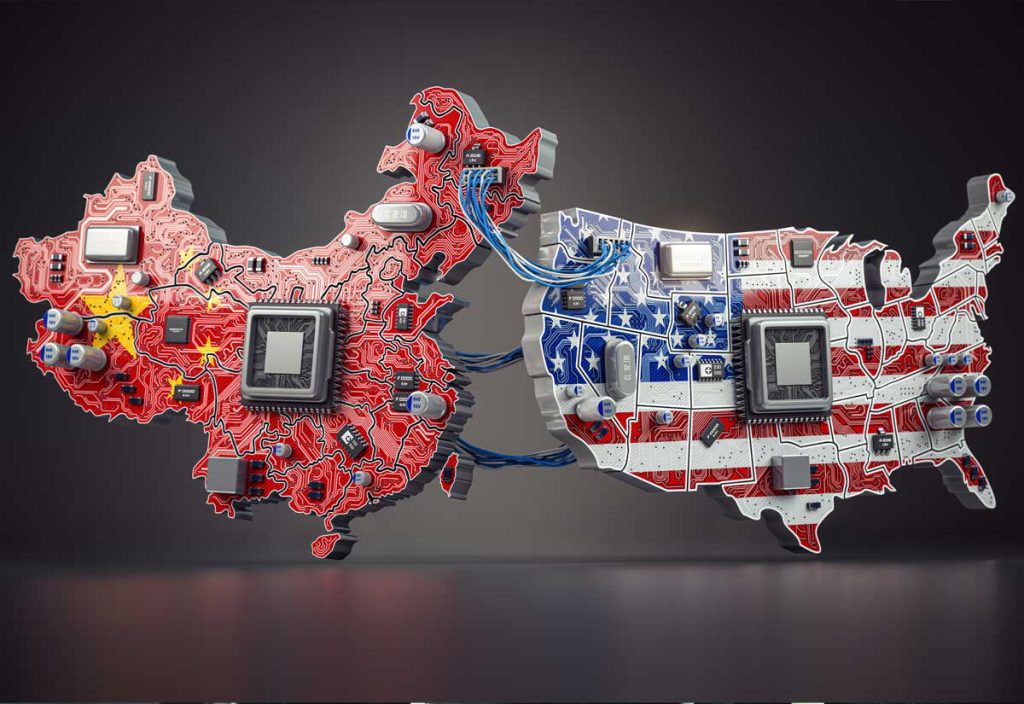Red China, driven by an unwavering ambition to achieve technological self-reliance, is aggressively pursuing efforts to replace American chip suppliers like Intel and AMD.
China’s Government-Led Investment Spree
The Chinese government is channeling billions of dollars into domestic chip development initiatives, bolstering research and development efforts, subsidizing industry players, and creating national champions like SMIC (Semiconductor Manufacturing International Corporation). This aggressive financial support aims to accelerate China’s technological independence and reduce reliance on foreign suppliers.
Intellectual Property Acquisition and Talent Recruitment
Chinese companies are actively acquiring smaller chip companies in strategic moves to acquire valuable intellectual property and attract skilled talent. They are also poaching top engineers and scientists from Western countries, offering lucrative incentives and opportunities to spearhead China’s ambitious semiconductor development agenda.
Indigenously Developed Chip Alternatives Inside China
China is developing and promoting its own processor architectures like Loongson and Phytium, positioning them as viable alternatives to Western designs. These homegrown solutions, though currently less advanced, aim to reduce dependence on foreign technology and provide leverage in negotiations with overseas suppliers.
Diplomatic and Geopolitical Maneuvering
China is leveraging its influence and economic power to gain favorable access to key technologies and materials. This includes pressuring other countries to reduce dependence on US chipmakers and exploring alternative supply chains to mitigate reliance on Western markets.
Strategic Stockpiling and Domestic Chinese Production:
Recognizing the vulnerability of global supply chains, China is aggressively stockpiling crucial chip components and expanding domestic production capacity. This aims to mitigate the impact of potential disruptions and ensure the continued flow of vital technology for its economic and military ambitions.
Potential Consequences of Red Chips On the Western Tech Table:
China’s relentless pursuit of chip independence poses significant challenges for Western countries, particularly the US. These include:
- Eroding Technological Leadership: As China advances its domestic chip industry, US technological dominance could weaken, potentially impacting its economic and geopolitical position.
- Supply Chain Disruptions: The ongoing trade war and China’s efforts to diversify its supply chains could lead to increased volatility and uncertainties in the global chip markets.
- National Security Concerns: Increased reliance on Chinese-made chips could create vulnerabilities for Western countries, exposing sensitive data and systems to potential risks.
Countering Red China’s Strategy
![]()
To counter China’s ambitions, the US and its allies need a multi-pronged strategy, including:
- Continued Investment in Domestic Research and Development: Increased funding for R&D, particularly in advanced chip technologies, is crucial to maintaining technological leadership.
- Strengthening Alliances and Partnerships: Collaborative efforts with like-minded nations can leverage collective strength in developing and accessing critical technologies.
- Diversifying Supply Chains: Reducing dependence on China and diversifying production to trusted partners can mitigate risks and bolster supply chain resilience.
- Protecting Intellectual Property: Enhanced enforcement of intellectual property rights and collaboration with global partners can prevent China from acquiring and exploiting proprietary technologies.
China’s aggressive quest for chip independence is a defining challenge of our time. Understanding their strategy and potential consequences is critical for shaping a response that ensures technological leadership, economic security, and national interests.
US and Taiwan Forge Strategic Alliance to Counter China’s Chip Lockout Strategy
Amidst Red China’s relentless pursuit of chip independence, the United States and its staunch ally, Taiwan, have joined forces to push back against their aggressive strategy. This strategic alliance, bolstered by Taiwan Semiconductor Manufacturing Company’s (TSMC) $6.6 billion investment in a new plant in Arizona, aims to secure vital chip supplies and maintain technological leadership.
TSMC’s Arizona Expansion
TSMC, the world’s leading chip manufacturer, has announced a massive expansion of its semiconductor production in Arizona. This $6.6 billion investment will establish a cutting-edge facility capable of producing advanced 5-nanometer chips, vital for powering smartphones, artificial intelligence, and other high-tech devices. This move not only strengthens US chip production but also reduces dependence on China, which has been heavily investing in its own chip industry.
US-Taiwan Semiconductor Collaboration
The US and Taiwan have a long history of collaboration in the semiconductor industry. This strategic alliance is further solidified by TSMC’s Arizona expansion, which will create thousands of jobs in the US and bolster the nation’s technological prowess. The two countries are also working together on research and development initiatives, seeking to advance chip technology and maintain their competitive edge.
Countering China’s Chip Lockout
China’s chip lockout strategy, aimed at reducing dependence on foreign suppliers, poses a significant threat to the US and its allies. However, the US-Taiwan alliance presents a formidable countermeasure. By securing access to advanced chip production through TSMC and collaborating on technological advancements, they can effectively mitigate the risks associated with China’s ambitions.
Positive Implications:
This strategic partnership between the US and Taiwan has several positive implications:
- Enhanced Technological Leadership: The collaboration will accelerate advancements in chip technology, ensuring the US and its allies maintain their competitive edge in this critical sector.
- Increased Supply Chain Resilience: Diversifying chip production reduces dependence on China, mitigating supply chain disruptions and ensuring access to vital technology.
- Job Creation and Economic Growth: TSMC’s Arizona expansion will create thousands of jobs in the US, boosting the local economy and fostering technological innovation.
- Strengthened US-Taiwan Relations: The partnership further solidifies the strong ties between the two countries, solidifying their commitment to shared values and strategic interests.
Conclusion
The US-Taiwan alliance, fueled by TSMC’s Arizona expansion, presents a powerful response to China’s chip lockout strategy. By working together, they can secure access to vital technology, maintain their technological leadership, and ensure a more resilient and prosperous future. This collaboration underscores the importance of international partnerships in a rapidly evolving technological landscape, where shared goals and strategic cooperation are essential to navigating the challenges and opportunities of the 21st century.
About Resource Erectors
When the chips are down and you’ve got to avoid the high cost of critical vacancies in your heavy industry organization, Resource Erectors has an extensive network of top-tier professional candidates ready to build your dream team in mining, civil construction, concrete, bulk materials, aggregates, and more.
For industry professionals ready to make a career-advancing move up the ladder, check out the opportunities with our company clients all across North America, and please don’t hesitate to contact us today so we can all get to work in the industries that keep our world up and running.








